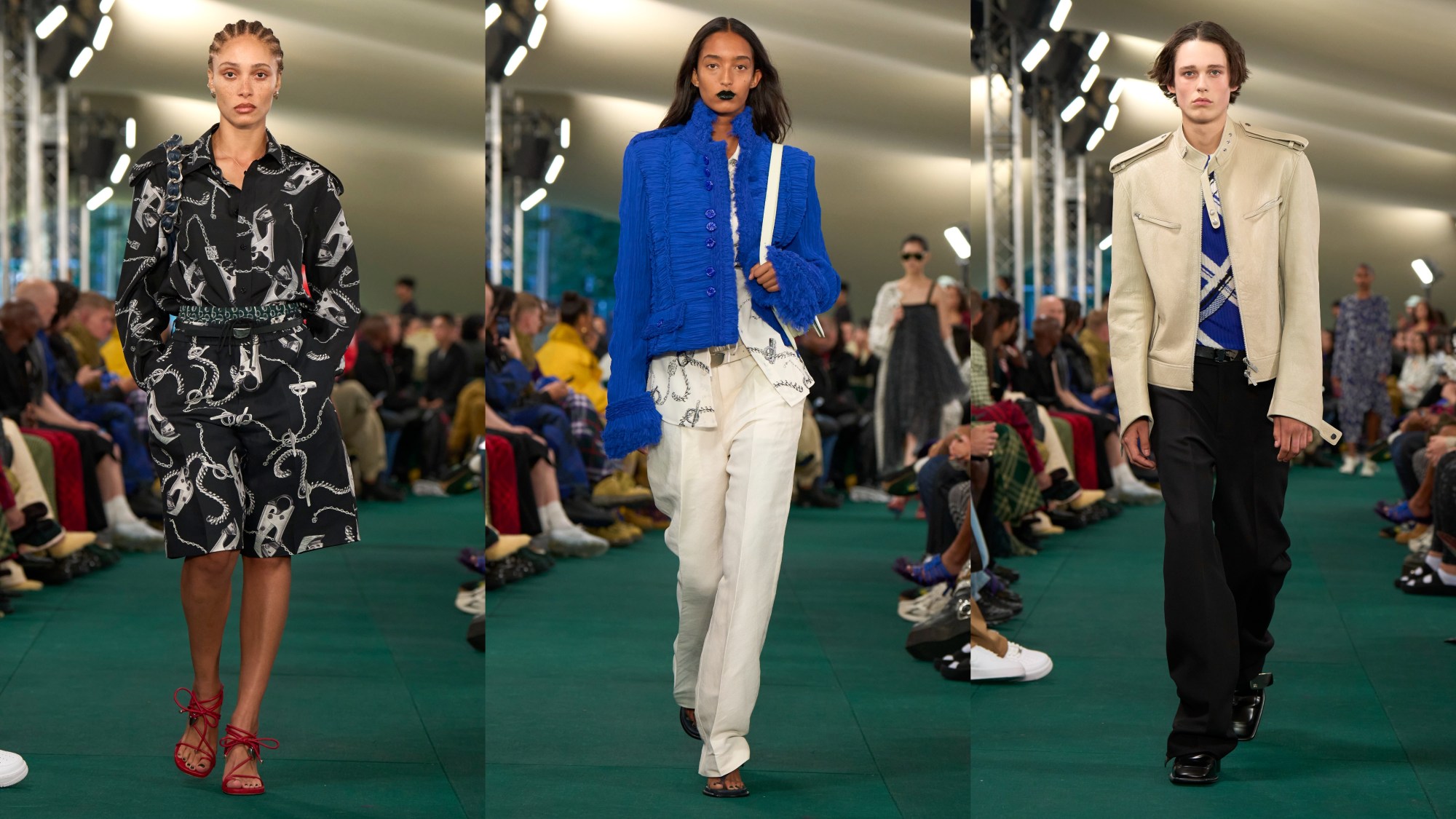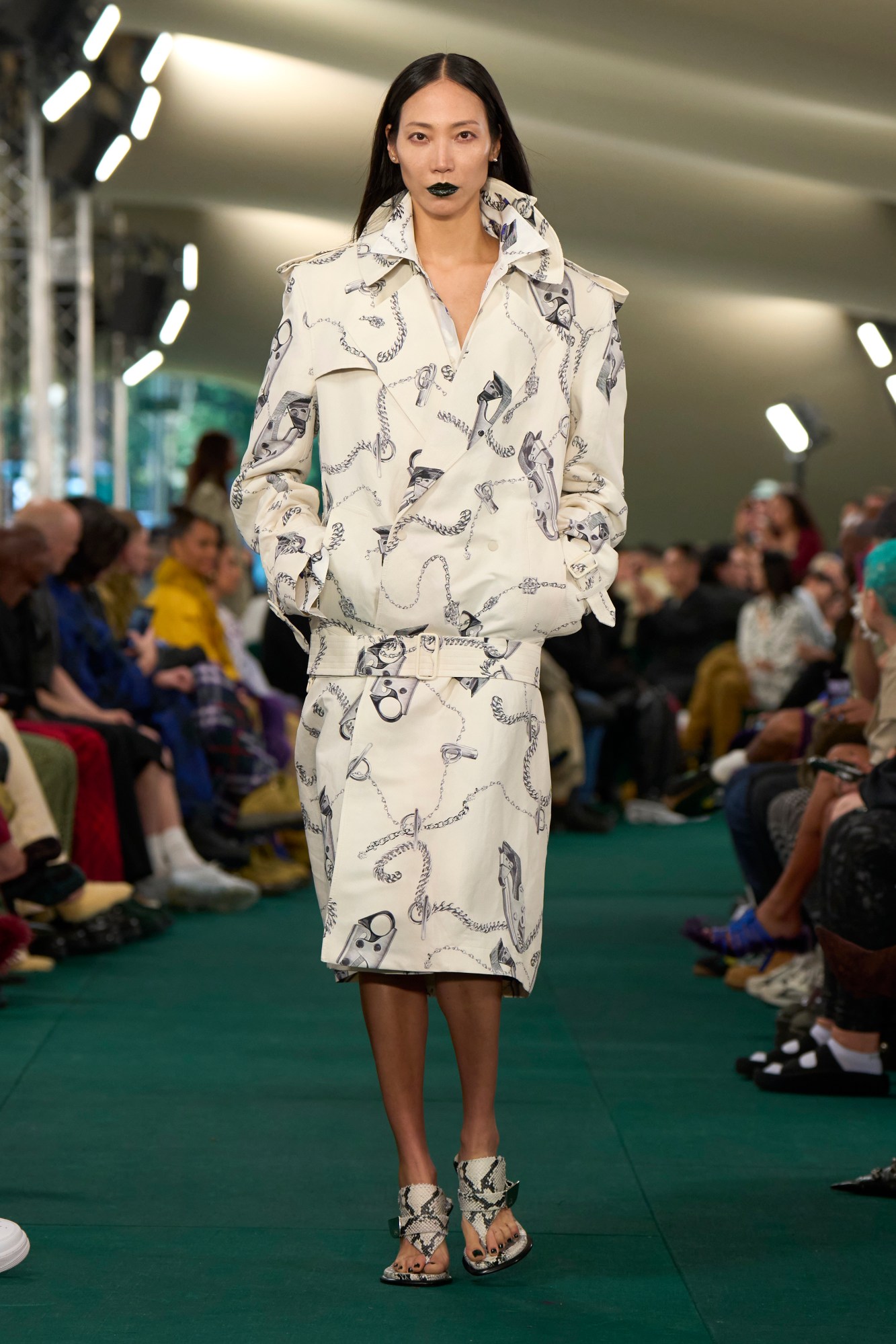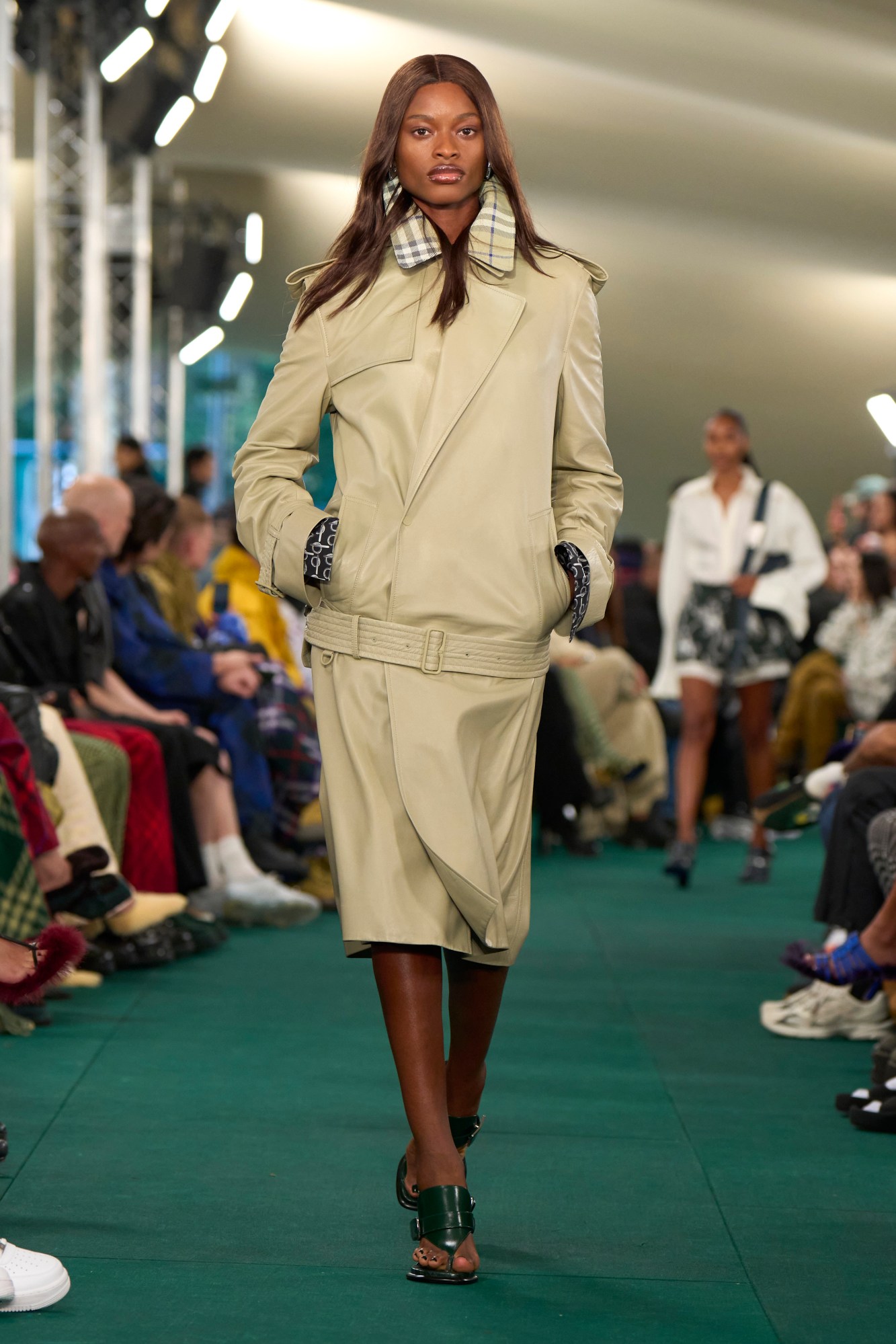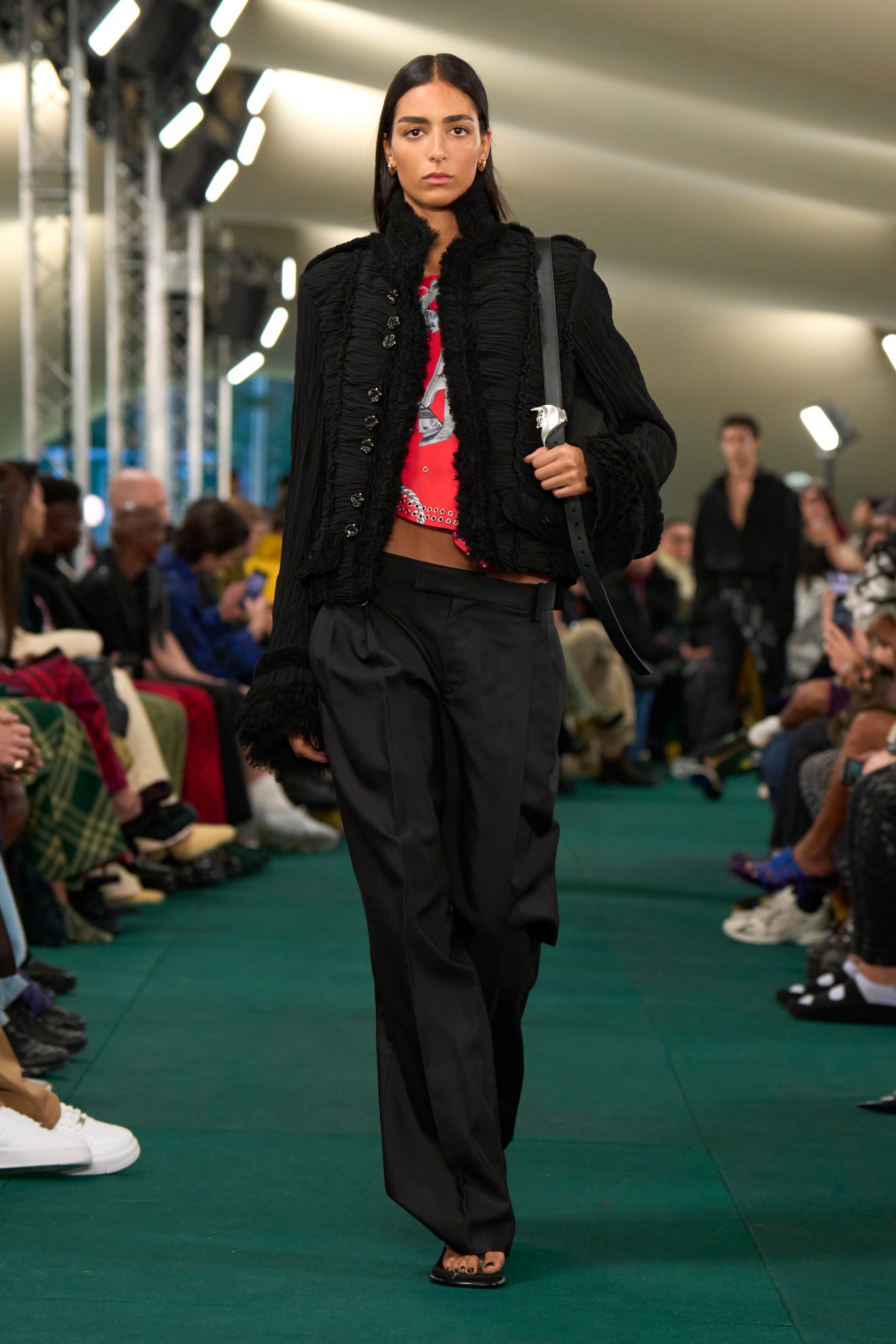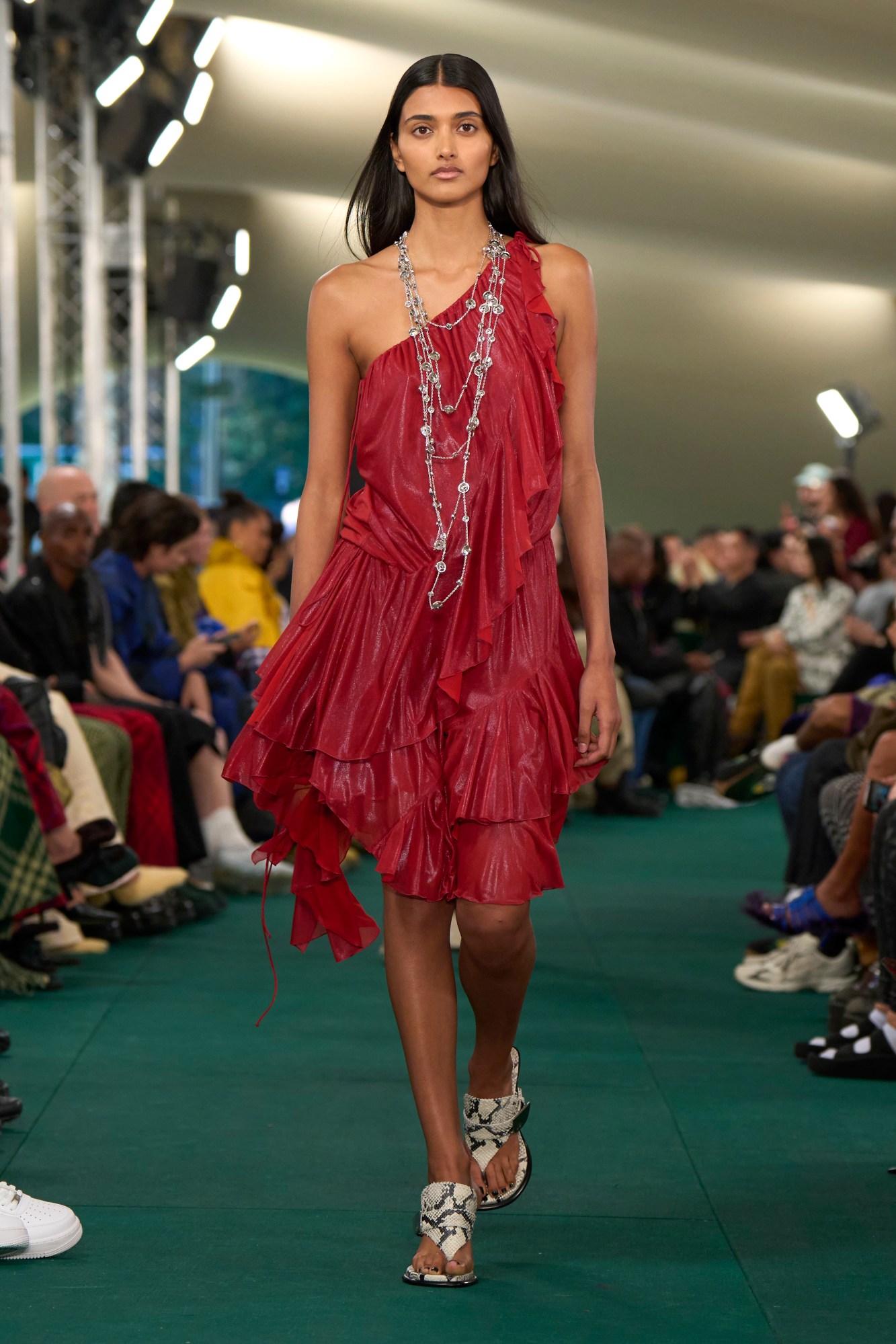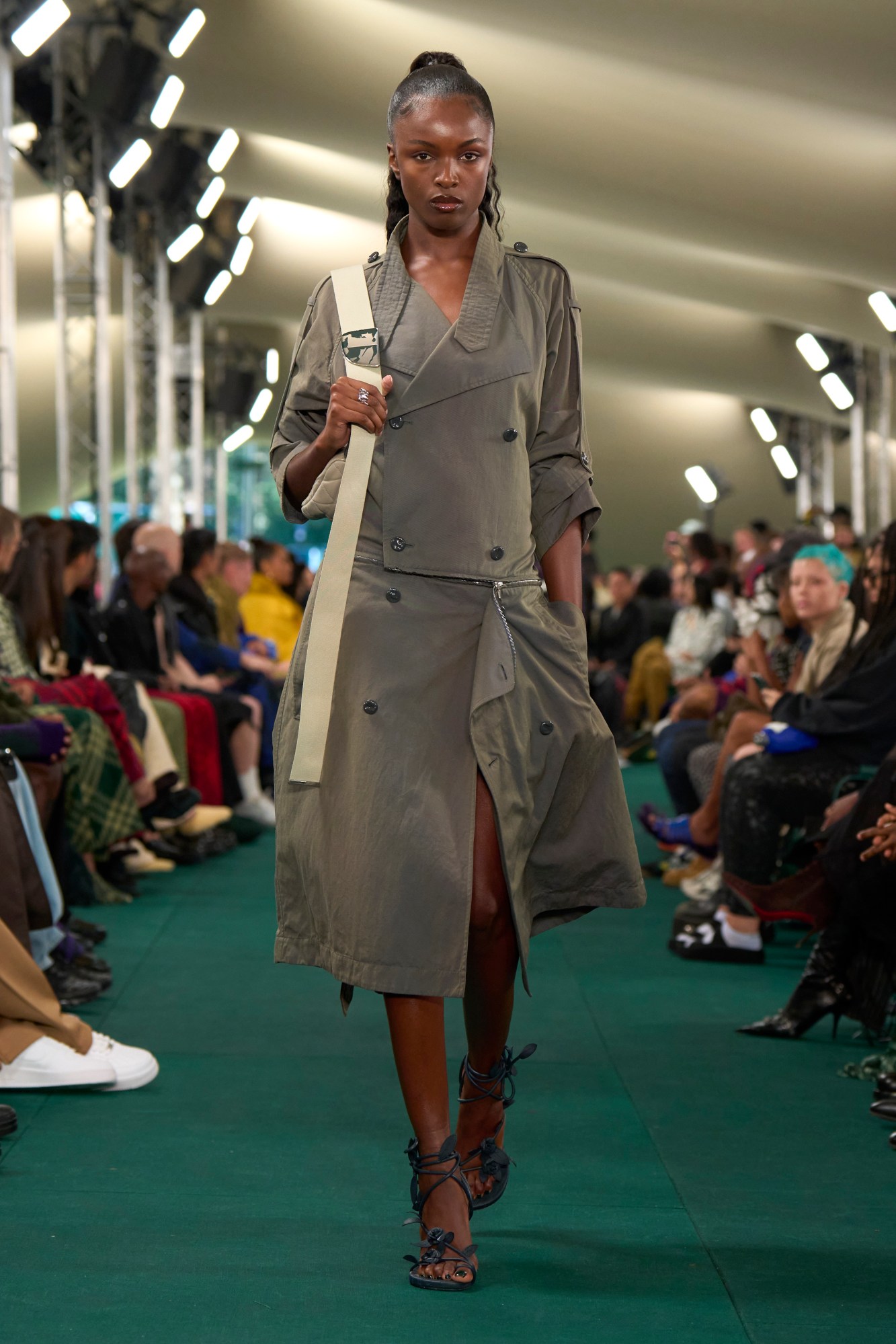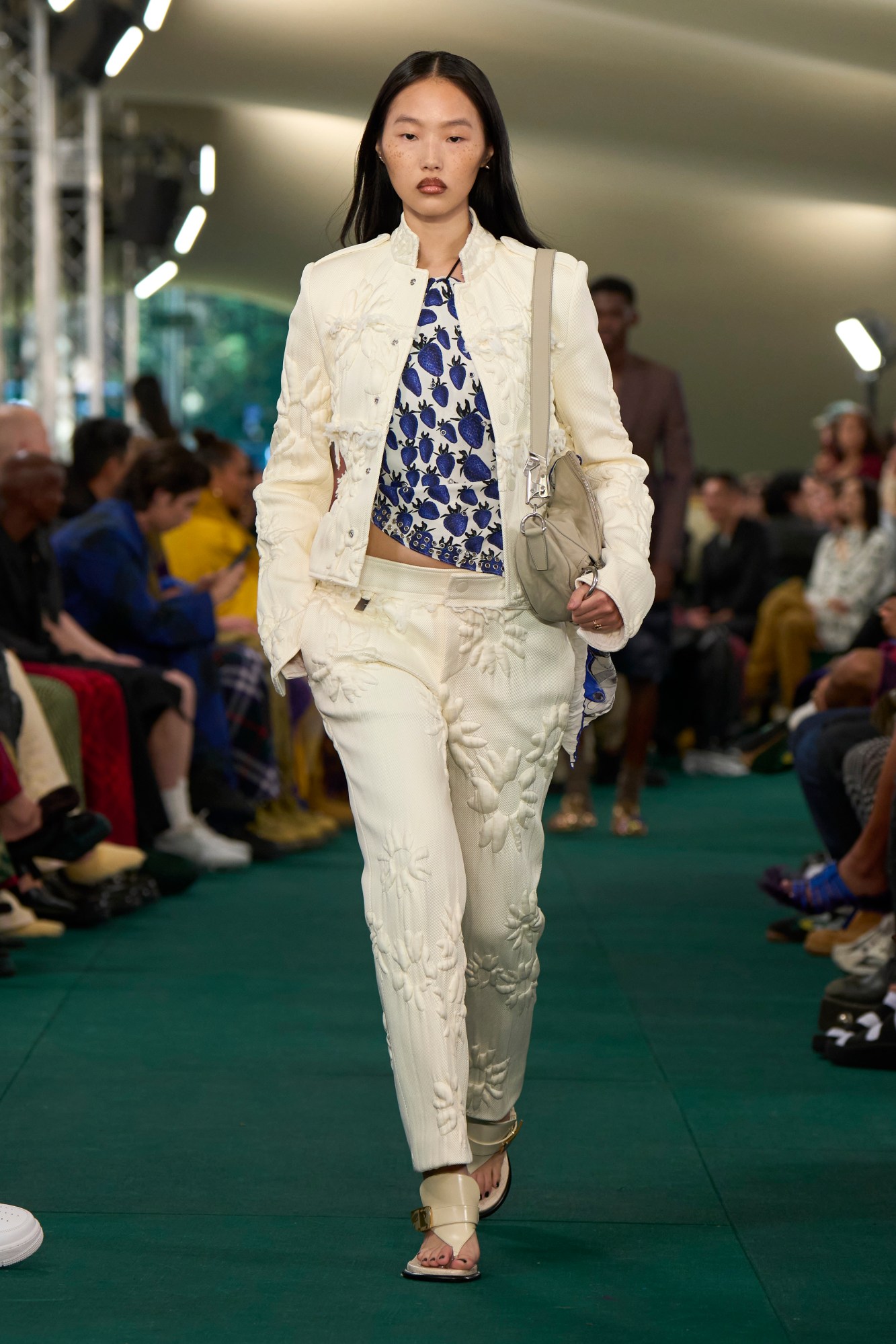Yesterday afternoon, Burberry invited guests on a damp walk through leafy, residential Highbury Fields, far from the usual show venues of London Fashion Week. Although the local dog walkers have been put out by weeks of the park being cordoned off, guests were delighted to be welcomed to the festival-like tent venue with cups of tea, hearty Eccles cake and slices of Guinness bread — a right ol’ English welcome following a week of very Bri’ish activations for the brand (national treasure Mary Berry in a campaign, a much-talked -bout pop-up greasy spoon café, the transformation of Bond Street station as ‘Burberry Street’ to celebrate a newly re-opened store). Whether you’re in fashion or just an ordinary Londoner taking the tube and perplexed by all the Burberry branding, you get the sense that Daniel Lee and the powers-that-be are going all out. Burberry is back and staking its claim on Old Blighty, its global USP.
Nowhere was that more obvious than on the front row: the cast of Top Boy, Mo Farah, Damon Albarn, Patsy Kensit, Shygirl… Theatre thespians sat alongside footballers, even honorary Brit Kylie Minogue was there. It was local and global, which could also be applied to Yorkshire-born Daniel Lee’s sophomore collection for Burberry, his second stab at defining his vision for the house. Top line: It was cleaner, sharper and more classic than his debut. No crochet ducks were to be found here. Instead, it was a reaffirmation of the Daniel Lee that we already know, namely the one who rebooted Bottega Veneta as a go-to for luxe-yet-logoless, strong-silhouetted wardrobe classics. The show opened with a handful of black and beige trench coats — which are to Burberry what tweed suits are to Chanel and wasp-waisted Bar jackets are to Dior — that came with dropped belted waists and boxy shoulders, buttons hidden for a cleaner look. Some came sleeveless for showing off toned biceps, others came in buttery leather, a silk collar peeking out. The result was sleek and urban, much more London-centric than the huntin’-shootin’-fishin’ wellies and blanket coats of his debut.
What followed were smart ciphers of the brand slightly abstracted as alternatives to logos. The famously reviled Burberry check, the subject of so much British social history, was subtly abstracted into slinky knits, woven into jacquard bags and hinted at with collars and linings of trenches suspended from chains. A handful of ladylike, BCBG foulard prints could easily have been horsey nods to the house’s logo, a knight on horseback — but instead, they were illustrations of heavy industrial chains and metal carabiner clips, whirling around flounced dresses, silk shirts and more trenches. And for all the stiff-upper-lip seriousness of the fash-pack staples, there was some jolliness to be found in fruity prints and retro floral prints. But perhaps the most British thing of all was the excellent tailoring — whittled double-breasted suits with slouchy, but somehow sharp trousers — which serves as a reminder that although Paris has haute couture and Italy has its leather workmanship, Britain has Savile Row.
Britain is a funny old place, and Burberry is a strange exception to the luxury behemoths that dominate fashion. According to reports, the house has ambitions to hike up its prices and go harder on its luxe factor, which is remarkable when you think of all the British in-jokes that it has successfully pulled off – the chips-and-eggs at Norman’s, Mary Berry as a campaign girl, the crochet ducks! — but ultimately this was a collection that was universal in its appeal; chic enough to transcend the bolstered borders of Brexit-era Britain. It comes at a time, too, where the wider landscape of London Fashion Week has been missing a leader — and the resurgence of the only Big Fish brand on the schedule could have immensely positive ripple effects on the city’s ecosystem of independent labels and young British designers. As Daniel Lee hits his stride, here’s hoping that his Burberrenaissance signals a move towards a new era, one in which Britannia rules again.
